A sprint retrospective can be the most powerful meeting of an agile team. If facilitated well, it allows the team to improve its effectiveness, resolve conflicts before they happen, and help everyone excel.

However, facilitating a retrospective session is often harder than it seems. Many people fall into the same repetitive structure:
While there’s nothing wrong with the approach itself, the problem appears when this format is repeated over and over again. People quickly get used to it and get bored, and the meeting no longer forces the team to think deeply about improving its processes.
Try to mix up retrospectives. It might seem difficult to come up with new ideas every time, but in reality, it just takes 10–20 minutes of prep to come up with an exciting retro format — an investment that pays off.
A retro usually needs a warm-up. It puts everyone in the right mood and might bring additional insights that’ll impact the retrospective direction.
Some warm-up exercises include:
After welcoming the participants, ask them one brief question. Each person answers in a round-robin fashion.
Examples of questions include:
Quickly understand the mood of retrospective participants and possibly get additional insights from that.
Sketch a thermometer and ask everyone to put a dot vote on a temperature that reflects their mood. Possibly, ask them to write down why they voted that way.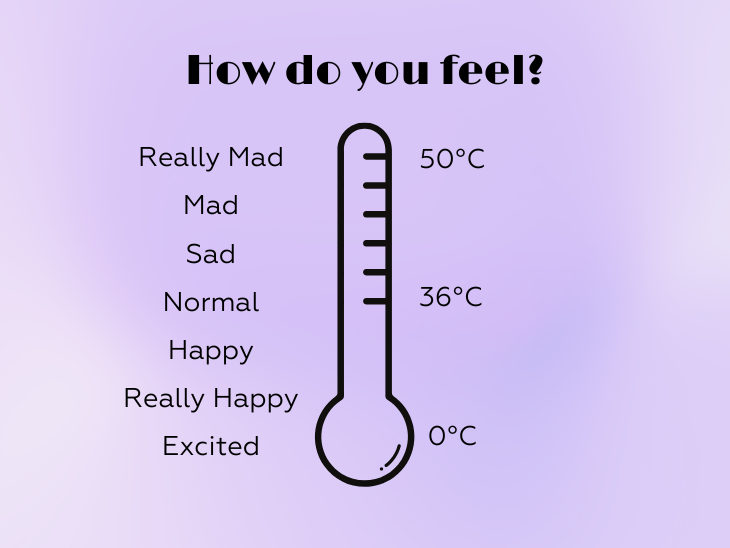
To quickly gather qualitative and quantitative data on how the sprint went according to the team.
Ask everyone to write a short review of the sprint, including:
Then, let everyone read others’ reviews. It can be done publicly or anonymously.
Get a quick overview of how the team perceives the last iteration.
Ask everyone to describe the sprint in one word only. You can extend the exercise by further asking team members why they chose given words.
Energize everyone and help participants break the ice.
Select a topic, and give people 1-2 minutes to discuss the issue in pairs. You can run a few iterations. This works great if the participants don’t know each other well. People can talk about how the sprint went well, about expectations toward the meeting, or even basic things like their favorite hobbies.
To truly improve, you need first to gather data. In some cases, you bring data to the meeting. In other cases, you need to gather it during the retrospective itself.
For those situations, try these formats:
Understand how specific events and situations impacted the whole sprint and the team’s morale.
Create a timeline from the start of the sprint until its completion. Then, write down all relevant events (big meetings, extraordinary events, critical bugs, etc.). After, write down sticky notes with positive and negative things that happened in the sprint and put them on the timeline accordingly.
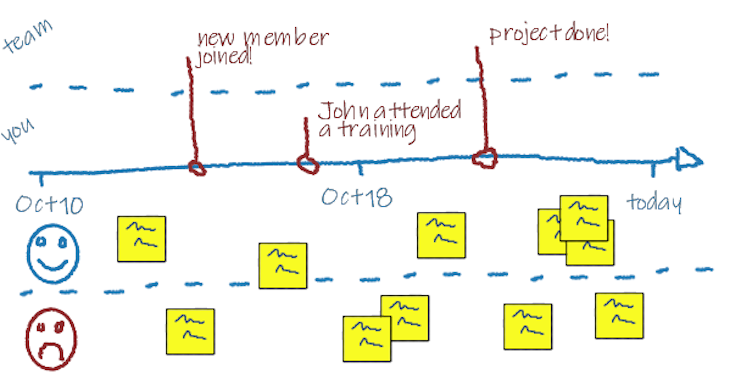
Evaluate how well the team lives by its values.
Create a radar chart with all team principles/rules listed. Either ask everyone to draw a radar chart on top of it or use a voting system to define the score for each value. As a result, you will get a bird’s eye view of how the team delivers in terms of agreed values and principles.
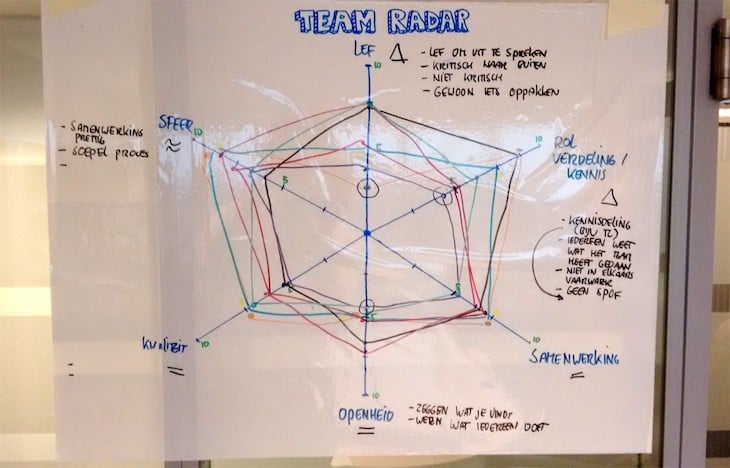
Define obstacles and opportunities on the team’s way to achieving the goal.
Sketch a sailboat. Create room for four types of quadrants:
Answer the questions and add sticky notes.

Define events and situations that evoked specific emotions.
Create three columns. Ask the team to write down things that made them mad, sad, and glad. You want to make sure you emphasize what or why people have those emotions. There’s also a simpler variation with two columns: what made you proud during the last sprint? What made you feel sorry?
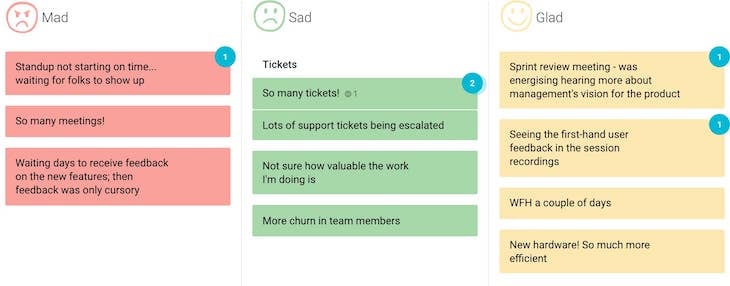
When you have relevant data gathered, you need to generate insights on how to move forward and tackle challenges.
The following formats are good for converting data into actionable insights:
Equally engage everyone in seeking solutions.
For smaller groups, you might try a 1-2-all variation:
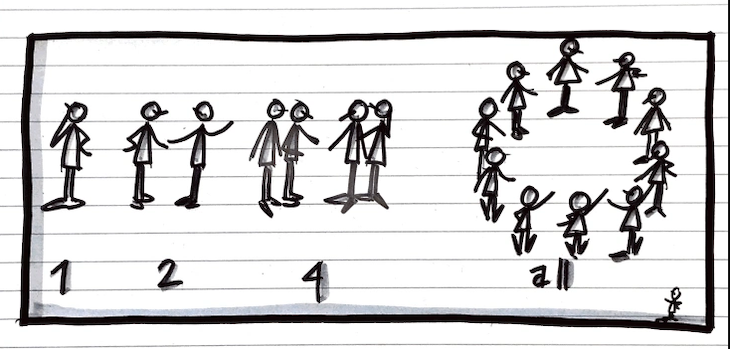
Combine the benefits of group brainstorming and focused solo work.
Brainstorming solo tends to generate more insights, but group brainstorming allows people to inspire each other which boosts creativity. Alternate between the two to maximize benefits.
To help the team expand others’ ideas.
Each person has five minutes to brainstorm and write down ideas individually. At the end of five minutes, each person passes the paper to the person on their right. That person has five minutes to write down ideas that build on the ideas already written on the paper. Repeat until the paper returns to the original writer.
A great retro ends up with clear next steps. Make sure you have at least one. If you have numerous ideas and insights on processing, try to group the first using affinity mapping.
Here are some retro formats for charting the path forward:
Quickly prioritize ideas by voting.
List down all ideas for solving the problem. Then, each participant votes on the ideas they like the most. There are numerous variations of this exercise:
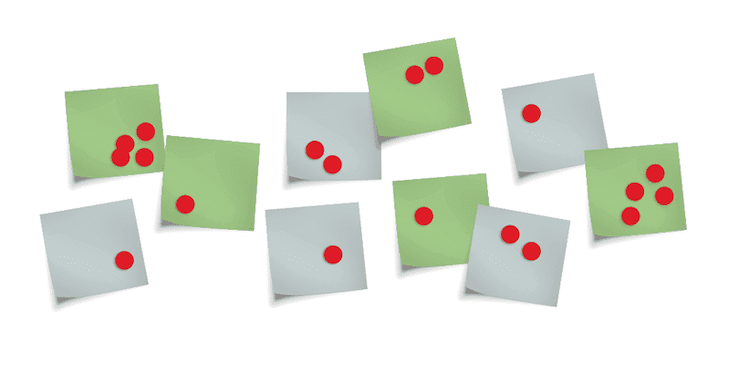
Find low-hanging fruits and big bets worth taking.
Rate all ideas in terms of the impact you expect them to have and the effort to implement them. Ideas with high impact and low effort are low-hanging fruits that should be prioritized. Big bets with high effort but high impacts are also worth considering.
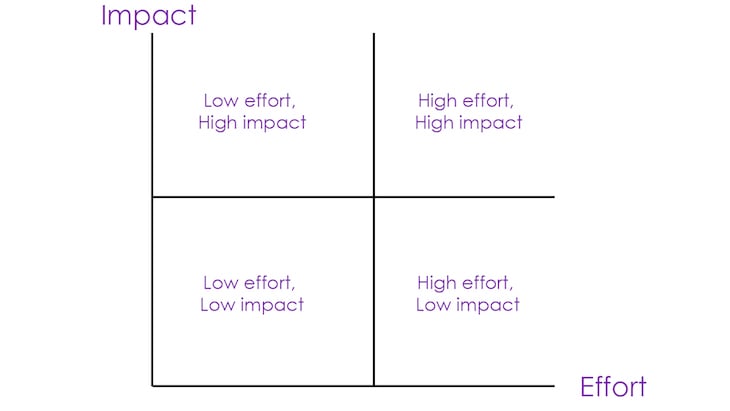
Prioritize solutions based on a defined list of criteria.
Decide what criteria you want to consider when making a decision. Then, score each idea 1-5 based on the criteria. Sum up the scores and prioritize ideas with the highest number.
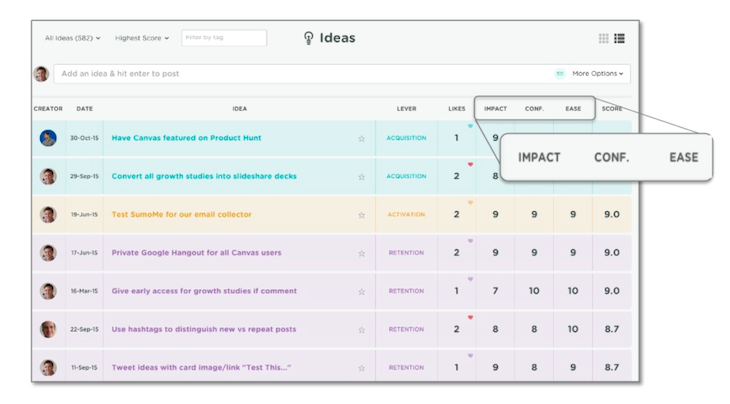
To choose the next action steps by asking questions inside the team.
Have the team sit in a circle (or choose a specific order if the session is remote). Turn to the person on your right, and ask the question: “From your perspective, what is the highest priority for us to try in the next iteration?” The person should answer the question and then turn to their right and either ask a question that extends the discussion or starts a new one. Keep the circle going until you are satisfied or run out of time.
Spend the last few minutes of the meeting to close the retrospective properly. It’s harder to remember the meeting if it ended abruptly without closure.
Try these formats:
Improve team relationships by sharing appreciation.
Ask participants to share what they appreciate about the team or someone specific. This exercise works especially well if the retrospective is tough and conflict-ridden. Plus, these types of conversations boosts morale significantly.
Quickly understand the mood of retrospective participants and compare it to their mood at check-in.
The rules are the same as in the case of the check-in exercise. Sketch a thermometer and ask everyone to put a dot vote on a temperature that reflects their mood. Possibly ask them to write down why they voted that way. This allows you to compare the changes and evaluate the effectiveness of the meeting itself.
To recap the most important outcomes of the retrospective.
Either as a group or using 1-2(-4)-all variation, discuss and write down an answer for three sets of questions:
To evaluate the meeting in the most important areas.
Decide on a set of criteria to evaluate your retrospectives. Then, prepare a dart target for each of the criteria. Ask participants to vote on how well the meeting went according to the criteria. The closer to the bullseye, the better the meeting was. It can be public or anonymous. You can also have a follow-up discussion if needed. This exercise works best if repeated regularly to compare if the meeting improves over time.
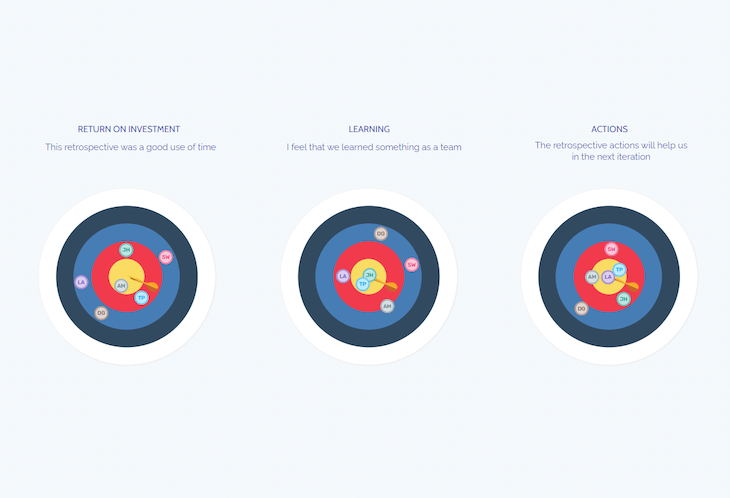
Featured image source: IconScout

LogRocket identifies friction points in the user experience so you can make informed decisions about product and design changes that must happen to hit your goals.
With LogRocket, you can understand the scope of the issues affecting your product and prioritize the changes that need to be made. LogRocket simplifies workflows by allowing Engineering, Product, UX, and Design teams to work from the same data as you, eliminating any confusion about what needs to be done.
Get your teams on the same page — try LogRocket today.

Stop letting unreliable data block features. Treat data as inventory to track quality, ownership, and ship with confidence.

Learn why slide decks slow teams down and explore better tools like whiteboards, PRDs, and prototypes to improve collaboration and alignment.

AI PM roles are evolving fast. Learn the five types of AI PMs, the skills they need, and how they shape AI products across industries.
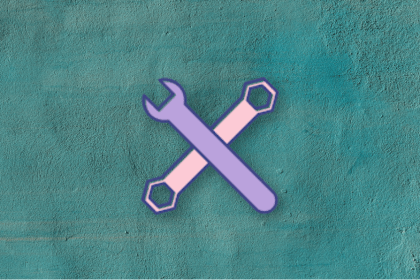
Learn how you can use AI agents to automate workflows, boost productivity, and choose the right tools while avoiding common pitfalls.
3 Replies to "20 fresh retrospective session formats and ideas"
This blog is a goldmine for sprint retrospectives! The wide range of formats and ideas provided here is incredibly valuable for enhancing team collaboration and continuous improvement. Thank you for sharing these practical insights and empowering product managers to run effective retrospectives.
Great blog post on running effective sprint retrospectives! The 20 formats and ideas mentioned are really helpful for keeping retrospectives engaging and productive. I’ll definitely be trying out some of these techniques in my next retrospective. Thanks for sharing! 👍🏼🚀
Thanks for sharing this great blog post on how to run effective sprint retrospectives! I especially appreciate the variety of retrospective formats and ideas, as well as the tips on how to facilitate a retrospective effectively. Creating a safe space where team members feel comfortable sharing their honest feedback, and keeping the retrospective focused on the sprint itself, are two of the most important things to keep in mind.
I highly recommend this blog post to anyone who is involved in agile development.